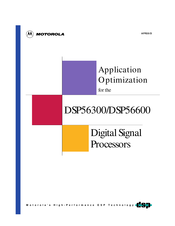motorola DSP56600 Manuals
Manuals and User Guides for motorola DSP56600. We have 1 motorola DSP56600 manual available for free PDF download: Manual
motorola DSP56600 Manual (112 pages)
Application Optimization for Digital Signal Processors
Brand: motorola
|
Category: Signal Processors
|
Size: 0.32 MB
Table of Contents
Advertisement
